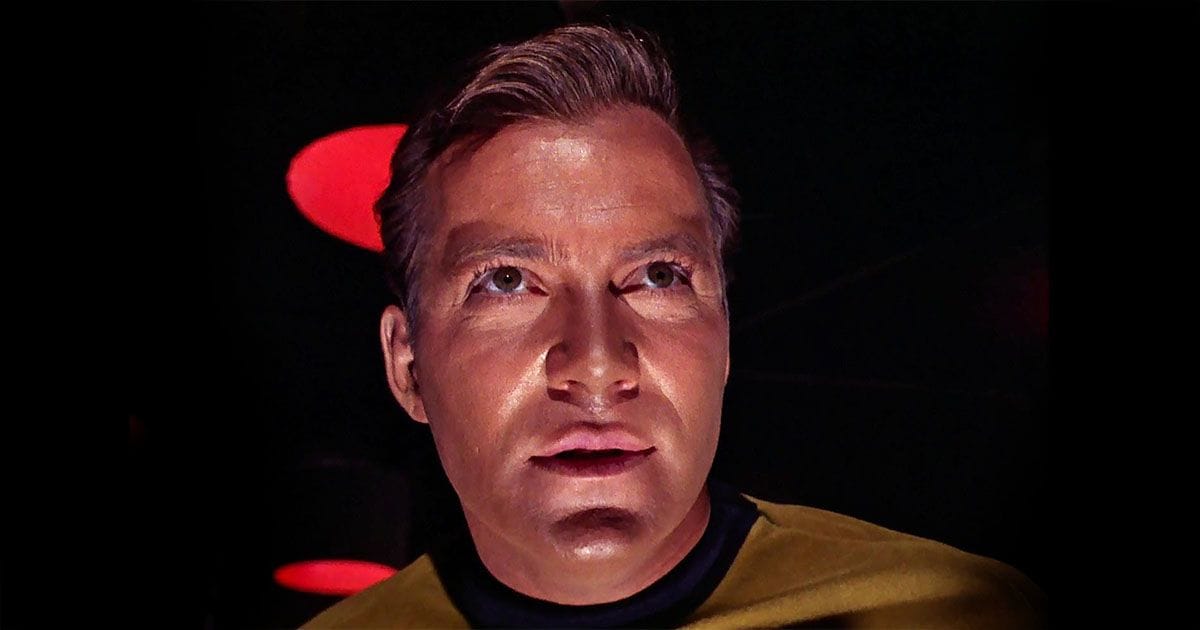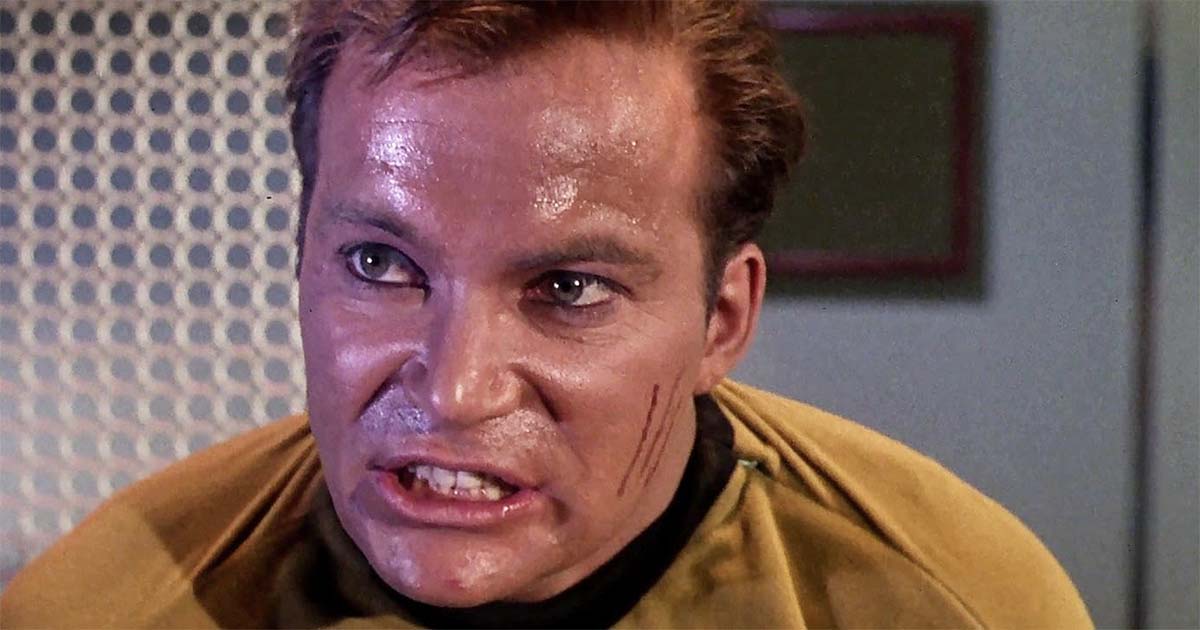Are Transporters in Star Trek Proof That Souls Exist?
Explore the mysteries of Star Trek transporters. Do they suggest the existence of a soul? Dive into the philosophical debate on identity and consciousness.

"Beam me up, Scotty." It's a line so iconic that it’s practically synonymous with Star Trek itself. But as fans of The Original Series (TOS) know, the transporter isn't just a flashy piece of science fiction technology — it's also a Pandora's box of philosophical quandaries.
One of the most intriguing questions posed by this technology is whether the transporter could be proof that souls exist in the context of the television and film series.
To be sure, the ultimate question of spiritual life is answered at the local reformed presbyterian or baptist church, so this article will not delve into theology and the nature of humanity in the real sense. Rather, we will dive into the nitty-gritty of how transporters work, explore what they mean for identity, and why, if the transporter is going to work without leaving you as a pile of disconnected atoms, there might just have to be a soul involved —in the fictional context.
How Do Transporters Work?
First, let's set the stage. Transporters in Star Trek are the Federation's go-to method for getting from point A to point B without all the fuss of walking or flying. The basic idea? Convert a person or object into energy, zap that energy across space, and then reassemble it on the other end. Easy peasy, right?
Well, not exactly. Here’s a breakdown:
1. Dematerialization
- The transporter scans the entire body at the subatomic level, breaking it down into a stream of energy particles known as a "matter stream."
- The particles are temporarily stored in a pattern buffer, like a cosmic pause button.
2. Transmission
- The matter stream is then beamed to the target location via subspace frequencies, which are basically the science fiction equivalent of your Wi-Fi router’s fastest signal, i.e., faster than a Klingon with a thirst for bloodwine.
3. Rematerialization
- Once the matter stream reaches its destination, the transporter reassembles the particles into their original form, reconstituting the individual in perfect health and shape—unless you’re having one of those rare transporter accidents (but we’ll get to that).
The Big Questions
- What happens to the consciousness during all this? Are you asleep, awake, or does your mind just blank out like during a tedious Starfleet briefing?
- Is the person who steps out of the transporter on the other end the same person, or is it a perfect copy with all the memories but none of the original essence?
These questions lead us to the heart of the matter. Is there something non-physical, like a soul, that the transporter preserves to ensure that you are still you after the process?
The Concept of the Soul in Science Fiction
Science fiction loves to play around with the idea of the soul, and Star Trek is no exception. But before we go boldly where no blog has gone before, let's take a brief detour through the spiritual side of sci-fi.
What Is a Soul, Anyway?
- Traditional Definition: The soul is the immortal essence of a person, housing their consciousness, personality, and selfhood. "The LORD God formed man from the dust of the ground, and breathed into his nostrils the breath of life; and man became a living soul," Genesis 2:7.
- Philosophical Take: Many philosophers argue that the soul is the seat of consciousness—the part of us that experiences thoughts, emotions, and the continuity of our identity over time.
The Soul in Science Fiction
- Ghost in the Machine: Many science fiction stories explore the concept of a soul in relation to artificial intelligence and consciousness. If an AI becomes self-aware, does it have a soul?
- Consciousness Transfer: In countless episodes across multiple series, including Star Trek, consciousness transfer raises questions about whether the soul moves with the mind or stays behind with the original body.
- Reanimation and Resurrection: Shows like Doctor Who and The Twilight Zone often play with the idea of bringing people back to life. Is the resurrected being the same as the original, or just a convincing duplicate?
When it comes to Star Trek, the transporter technology might just be the best lens through which to examine the soul, particularly when we dive into what’s known as the “Transporter Paradox.”
The Transporter Paradox
The Transporter Paradox is the kind of brain-bending concept that’ll make you wish you had a Vulcan to explain things logically—or at least a good Romulan ale to dull the headache. Here's the gist:
The Paradox Explained
- When you step onto a transporter pad, the machine disassembles you at the atomic level. Your body is reduced to pure energy, effectively destroying the physical you at that moment.
- This energy pattern is then sent to a new location, where it is reconstituted into a new physical form that is identical to the original in every way.
- But here’s the kicker. If the original you was destroyed, is the person who steps off the transporter really you, or just a perfect copy?
Key Philosophical Questions
- Continuity of Identity: If your atoms are destroyed and reassembled, is your consciousness—the “you” inside your head—transferred as well? Or does each transport create a new person with the same memories but a different soul (or no soul at all)?
- The Ship of Theseus: This ancient philosophical puzzle asks if a ship that has all its parts replaced remains the same ship. Similarly, if your atoms are entirely replaced, are you still you?
This paradox forces us to confront whether there is something immaterial, like a soul, that ensures continuity of identity through the transporter process. If there is no soul, then each time someone uses a transporter, they may be replaced by a doppelgänger—a sobering thought, even for the bravest of Starfleet officers.
Key Episodes That Address the Soul and Identity
Luckily for us, Star Trek: TOS has never shied away from grappling with the metaphysical implications of its technology. Here are some episodes that offer tantalizing hints that souls—and the continuity of identity—might be more than just a science fiction fantasy.

1. "The Enemy Within" (Season 1, Episode 5)
- Plot: After a transporter accident, Captain Kirk is split into two separate beings: one good, one evil.
- Soul Implication: This episode raises the question of whether the soul, if it exists, could be divided. If Kirk’s “good” side and “evil” side are separated, does each half possess a piece of his soul? Or is the soul indivisible, residing in one part but not the other?
- Takeaway: The transporter doesn’t just manipulate matter—it seems to affect the very essence of a person. This suggests that the soul could be integral to a person’s identity, and not just their physical or mental attributes.
2. "What Are Little Girls Made Of?" (Season 1, Episode 7)
- Plot: Dr. Roger Korby discovers a way to transfer human consciousness into android bodies, effectively creating duplicates that are indistinguishable from the original.
- Soul Implication: If consciousness can be transferred to a machine, what happens to the soul? Does it transfer as well, or does it stay with the original body? This episode suggests that even if you can replicate someone’s mind perfectly, there might be something missing—perhaps the soul.
- Takeaway: The process of duplication or consciousness transfer hints that the soul could be something that isn’t easily replicated or transferred, raising doubts about whether a transporter could ever truly capture the full essence of a person.
3. "Turnabout Intruder" (Season 3, Episode 24)
- Plot: In the final episode of TOS, Captain Kirk’s mind is swapped with that of Dr. Janice Lester, leading to a battle over control of his body.
- Soul Implication: This episode explores the idea of mind-body dualism—if the mind can be transferred to another body, does the soul transfer as well? Or is the soul inherently tied to the physical body?
- Takeaway: The episode suggests that identity and selfhood are more than just the mind—they involve the body and perhaps something else that ties them together, like a soul. The transporter, therefore, might need to account for this non-physical component to maintain the continuity of identity.
These episodes offer compelling evidence that Star Trek doesn’t shy away from the idea that there’s more to a person than just their physical form. If the transporter works as intended, it might be because it somehow preserves this elusive “something”—potentially a soul.
The Case for the Soul in Transporters
So, let's put on our metaphorical science officer hats (or berets, if you prefer to think like a philosopher) and consider the argument for the existence of a soul in the context of Star Trek's transporter technology.
1. Continuity of Self
- The Problem: If the transporter destroys your original body and reassembles you as a perfect copy, how can we be sure that the new version is really “you” and not just a convincing replica?
- The Soul Solution: One possible explanation is that there’s something non-physical—like a soul—that is preserved during the process. The soul would act as the anchor for your consciousness, ensuring that the “you” who steps out of the transporter is the same “you” who stepped in.
- Supporting Theories: Philosophical theories like dualism suggest that the mind and body are distinct, and that the soul is the key to maintaining personal identity over time, even through physical changes.
2. The Need for Non-Physical Components
- Physical Limits of Technology: The transporter can reassemble a person's physical form with perfect precision, but if consciousness and identity are more than just physical phenomena, then something non-physical, like a soul, might be necessary to complete the process.
- Evidence from TOS Episodes: The aforementioned episodes of TOS suggest that identity and selfhood cannot be entirely reduced to physical components. The transporter’s ability to maintain continuity of self across dematerialization and rematerialization could imply that it interacts with the soul, preserving it during the process.
3. Transporter Accidents and the Soul
- The “Accident” Episodes: Throughout TOS, we see various transporter mishaps where people are duplicated, split, or even merged. These episodes often raise questions about the integrity of identity.
- Soul Implications: If a transporter accident can result in two identical copies of a person, does each copy have a soul? Or does only one version possess the original’s soul, while the other is a soulless doppelgänger?
- Philosophical Support: The concept of “soul division” or “soul duplication” is explored in various philosophical and religious traditions. In the context of transporters, these accidents might hint that while the technology can replicate physical forms, the soul remains unique and cannot be duplicated.
4. The Continuity Problem Solved by the Soul
- The Continuity Problem: Without a soul, the person who steps out of the transporter would be a perfect copy, but not the same individual who stepped in. This leads to a philosophical problem—what happened to the original person’s consciousness?
- Soul as the Answer: The soul provides a solution to this continuity problem. It acts as a thread that connects the person before and after transportation, ensuring that despite the physical destruction and reassembly, the person remains the same at a deeper, non-physical level.
- Science Fiction and Spiritual Intersection: This idea isn’t unique to Star Trek. Many science fiction stories that explore teleportation or consciousness transfer hint at the existence of something more—something that ties the physical and the metaphysical together. In Star Trek, this “something” could well be the soul.
Counter Arguments and Responses
Of course, not everyone in the Federation (or the fanbase) would agree with the notion that transporters prove the existence of souls. Let's consider some counterarguments and how they might be addressed.
1. Materialist Perspective
- The Argument: Materialists argue that everything about a person, including consciousness, can be reduced to physical processes. The transporter doesn’t need to account for a soul because identity and consciousness are entirely material phenomena.
- Response: While materialism offers a straightforward explanation, it struggles to address the subjective experience of continuity. If the person who steps out of the transporter feels like the same person, but all the original atoms were destroyed, materialism doesn’t fully explain how this sense of self is preserved.
- Philosophical Debate: This leads to ongoing philosophical debates about the nature of consciousness. Materialists might argue that the mind is an emergent property of the brain’s physical structure, but this still leaves questions about whether something immaterial (like a soul) might be necessary to explain personal identity.
2. The Physicalist Approach
- The Argument: Physicalists believe that if the transporter reassembles your brain exactly as it was before, then your thoughts, memories, and consciousness will simply “reboot” without the need for a soul.
- Response: This approach assumes that consciousness is purely a function of physical brain states. However, it doesn’t address the potential for multiple identical versions of “you” to exist if the transporter process were to create duplicates, each claiming to be the original.
- Ethical Implications: If the transporter can create perfect copies, this raises ethical questions about the value of individual lives. Are all copies equal, or is there something inherently unique about the original, perhaps linked to the soul?
3. Technological Solutions to Continuity
- The Argument: Some suggest that technological solutions, such as quantum entanglement or advanced AI, could theoretically maintain continuity of consciousness without invoking a soul.
- Response: While these technological solutions are fascinating, they often rely on speculative science that hasn’t been fully developed or understood. The concept of a soul offers a more straightforward explanation for continuity that doesn’t require hypothetical advances in technology.
- Star Trek’s Ambiguity: Star Trek often leaves these questions open-ended, allowing for both technological and metaphysical explanations. The ambiguity keeps the debate alive and adds depth to the show’s exploration of identity.
Conclusion
In the world of Star Trek, the transporter is more than just a convenient plot device—it’s a gateway to some of the most profound philosophical questions about identity, consciousness, and the nature of the soul. While the science behind transporters is fascinating, it also leaves us with a tantalizing mystery: If the transporter works as described, there must be something more than just matter and energy holding us together.
Perhaps that “something” is a soul.
Final Thoughts
Whether you’re a believer in the metaphysical or a die-hard materialist, Star Trek challenges us to think about what makes us who we are. The transporter’s ability to disassemble and reassemble people raises the question of whether there’s something beyond the physical that preserves our identity through this process.In true Star Trek fashion, this isn’t a question with a simple answer. It’s a debate that spans the realms of science, philosophy, and spirituality, much like the show itself spans the far reaches of the galaxy.

